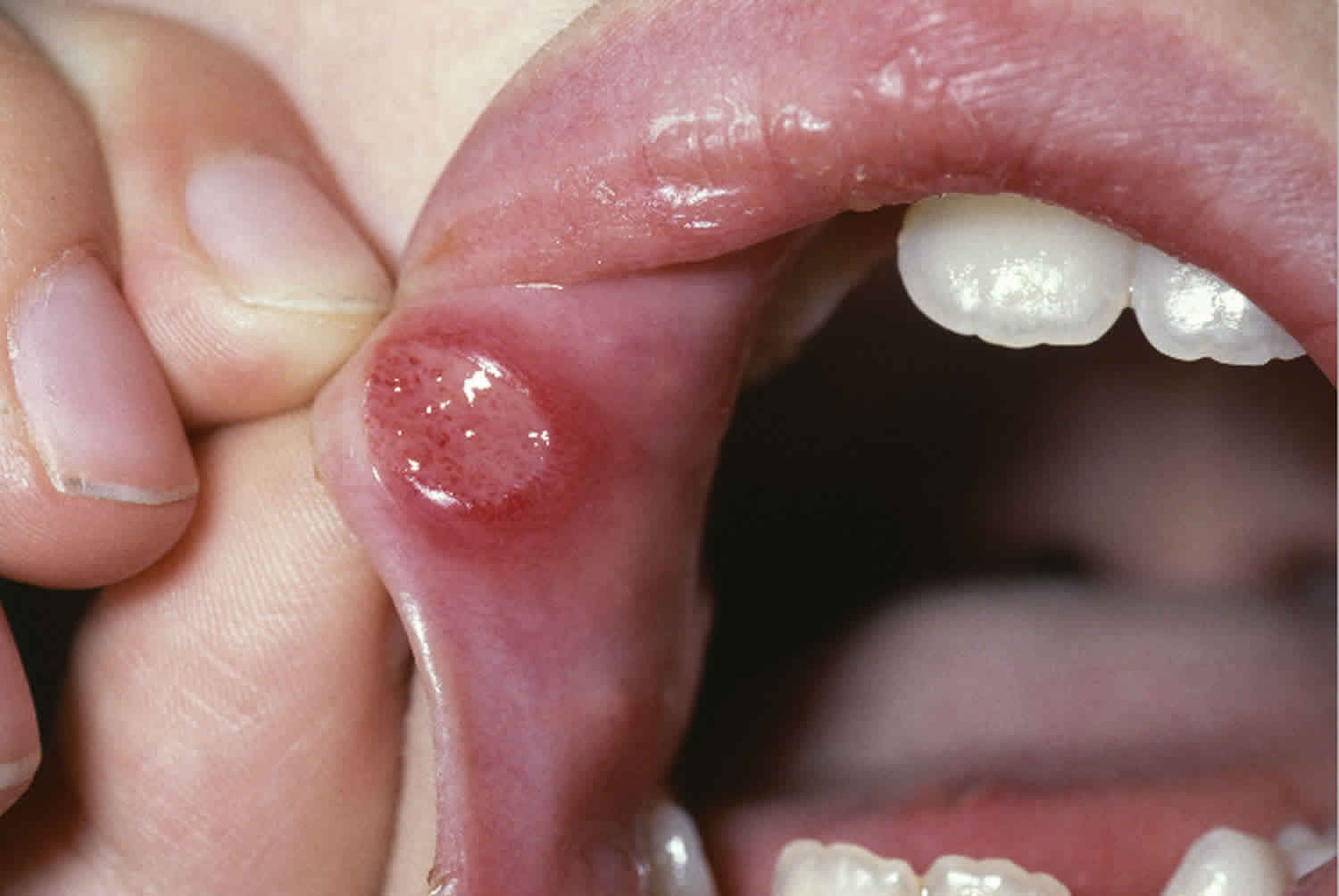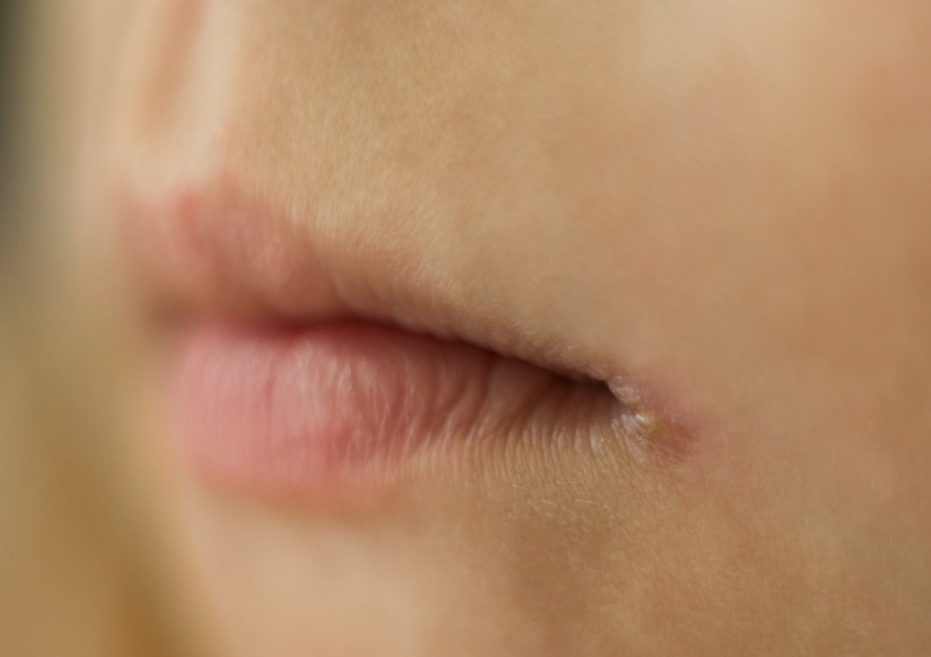Definition
Herpetiform ulcers are mouth ulcers that are small, numerous, and clustered. They can be white or yellow and are typically found beneath the tongue. The condition is a variant of aphthous stomatitis (thrush), the most common oral mucous membrane disorder worldwide.
Herpetiform ulcers, or aphthous stomatitis, are classified into three types: minor, central, and herpetiform (herpetiform ulcer). Herpetiform ulcers are the rarest type of thrush, accounting for only 5% of cases.
Causes
The cause of herpetiform ulcers, or aphthous stomatitis, is generally unknown. However, what is certain is that a viral infection does not cause this condition. These ulcers are distinct from those caused by the herpes simplex virus (they share ulcer characteristics and recur easily).
A possible explanation for the mechanism of herpetiform ulcers is that the immune system damages the mucous membrane's epithelial layer (cells on the body's surface).
A controversial theory is the imbalance of the oral microbiota. Bacteroidal bacterial species were found to be more prevalent in patients with frequently recurring herpetiform ulcers. However, further research into this is needed to determine whether an imbalance in the oral microbiota plays a role in causing herpetiform ulcers.
Risk Factor
Herpetiform ulcers are more common in women. They usually develop for the first time in the second decade of life. Most people were under 30 years old when they first developed herpetiform ulcers. The frequency and severity of ulcer episodes will increase during the third and fourth decades of life and decrease with age.
Herpetiform ulcers are associated with the presence of certain diseases, such as:
- Behcet's syndrome, a rare condition that causes inflammation of blood vessels throughout the body
- Lupus
- Inflammatory bowel disease (IBD)
Some factors that may increase the chances of a person suffering from recurrent herpetiform ulcers are:
- Genetic factors
A family history of herpetiform ulcers may increase a person's risk of developing the condition. In inherited herpetiform ulcers, symptoms usually occur at an earlier age and with greater severity.
- Nutritional disorders
Nutritional deficiencies, especially iron, folic acid, vitamin B6, and vitamin B12. In some studies, it was found that people with herpetiform ulcers had twice as many nutritional disorders as normal people.
- Environmental factors
An injury to the oral area, either by wound or chemical means, can trigger the onset of mouth ulcers, especially in people prone to herpetiform ulcers. In addition, psychological stress is also thought to play a role in the formation of these ulcers, although this still requires further research.
- HIV infection
About 66% of people with HIV also suffer from herpetiform ulcers. Unlike healthy people, these ulcers can occur all over the mouth, not just in certain places.
- Dry mouth or xerostomia
Saliva is a lubricating agent with antimicrobial properties. Lack of saliva will trigger the onset of herpetiform ulcers. - Food sensitivities
Allergies to chemicals or food flavorings are also one of the factors that cause recurrent mouth ulcers. Some foods, such as chocolate, coffee, nuts, cereals, almonds, strawberries, cheese, tomatoes, and wheat flour, can be the cause for some people.
Diet and oral hygiene are said to be unrelated to the presence of herpetiform ulcers, but this remains controversial.
Symptoms
Ulcers with the following characteristics characterize herpetiform ulcers:
- Shallow
- Round to oval in shape
- Small in size, generally about 1–2 mm in diameter
- Numerous, usually ranging from 10 to 100 small ulcers
- Clustering can be small and localized but can also spread throughout the mucous membranes of the oral cavity
- Pain usually lasts 3–4 days, or until a thick white membrane covers the sores. This covering is a sign of healing (epithelialization)
- Some mouth ulcers are accompanied by enlarged lymph nodes in the area under the jaw
- The onset of mouth ulcers may be preceded by a burning or hot sensation in the mucous membranes, rarely accompanied by fever. After that, ulcers will develop within 24 to 48 hours
The location of mouth ulcers is usually on:
- The mucous membranes of the lips and cheeks (inside)
- The gum area between the teeth
- Front palate
- Tonsils
- The floor of the mouth
- The lower part of the tongue
- The back side of the tongue
Generally, the ulcers will last for 7 to 10 days and heal on their own without leaving scars. However, recurrences often occur at intervals of several days to months.
The difference between herpetiform ulcers and herpes simplex ulcers is that, in herpes simplex, the ulcer begins with the formation of a small blister (vesicle), which will quickly burst to form an ulcer. Herpes simplex ulcers also usually develop in different places, often on the back of the palate, the top (back) of the tongue, and the gums above the teeth.
Diagnosis
There are no specific laboratory tests to diagnose herpetiform ulcers. It is typically diagnosed after the doctor has ruled out other diseases that may cause similar complaints by asking questions about the patient's symptoms and the appearance of the ulcers during the examination. The doctor will examine the ulcers' characteristics, such as number, size, length of time they have been present, whether there are ulcer-free periods, location, pain, and any other ulcer-related complaints.
Management
There are many treatment options for herpetiform ulcers. Treatment is chosen based on the severity of the pain, the patient's medical history, the side effects of the medication, the patient's ability to tolerate the treatment, and the cost. It aims to reduce complaints, promote healing, and prevent recurrence.
Ointment
Topical medications, such as gel, cream, or paste, can be applied to the surface of the mouth ulcer to form a protective barrier, preventing further irritation and secondary infection. These topical medications are administered in small doses, and patients are advised not to eat or drink for 30 minutes after application. Doctors may also prescribe corticosteroid ointments to reduce mouth inflammation and antimicrobial ointments in case of a bacterial infection or if the herpetiform ulcers are suspected to be caused by bacteria.
Medication
Your doctor may prescribe medication in addition to an ointment for severe and recurring herpetiform ulcers. Corticosteroid drugs, such as prednisone, may be prescribed by the doctor. Nonsteroidal anti-inflammatory drugs (NSAIDs), such as diclofenac, can be used to treat pain. In severe cases, the doctor may also prescribe immunosuppressive drugs.
Addressing the underlying disease
Other treatments may also depend on the possible cause. As with allergies or nutritional deficiencies, treatment will address these issues before treating mouth ulcers. Daily multivitamins can be used by people with nutritional disorders, but they are not said to prevent recurrence.
In food-induced ulcers, eliminating the trigger foods may help. Avoid salty and spicy foods to avoid pain from ulcer irritation. Some people have reported developing ulcers after exposure to pineapple, cheese, and sodium lauryl sulfate in toothpaste and oral cleansers. In these cases, avoiding these substances may speed up healing.
Furthermore, when an ulcer is present, avoid foods that can aggravate the ulcer or cause new ulcers, such as hard or sharp foods.
Complications
Herpetiform ulcers are generally not severe and will heal independently without specific treatment. Ulcers, on the other hand, can be excruciating and uncomfortable, especially if they recur regularly. Secondary bacterial infections may occur as a disease complication, although rare.
Prevention
To reduce the appearance of ulcers, particularly in people with a history of recurrent aphthous stomatitis, you can do the following:
- Preventing foods that can trigger ulcers
- Implementing a healthy and balanced diet that contains enough nutrients and vitamins
- Maintain dental hygiene and use a soft toothbrush to avoid irritation
- Reducing stress and getting enough rest
When to See a Doctor?
If the herpetiform ulcer does not heal within three weeks or is accompanied by severe pain, you should consult a doctor for treatment.
Want to know more information about other diseases? Click here!
- dr. Yuliana Inosensia
Aphthous Stomatitis: Background, Pathophysiology, and Epidemiology. (2021). eMedicine. [online] Available at: https://emedicine.medscape.com/article/1075570-overview#a4 [Accessed June 9, 2022].
Tarakji, B., Gazal, G., Al-Maweri, S.A., Azzeghaiby, S.N., and Alaizari, N. (2015). Guidelines for the diagnosis and treatment of recurrent aphthous stomatitis for dental practitioners. Journal of International Oral Health: JIOH, [online] 7(5), pp. 74–80. Available at: https://www.ncbi.nlm.nih.gov/pmc/articles/PMC4441245 [Accessed June 9, 2022].
Dermnetnz.org. (n.d.). Aphthous ulcer | DermNet NZ. [online] Available at: https://dermnetnz.org/topics/aphthous-ulcer. [Accessed June 9, 2022].












